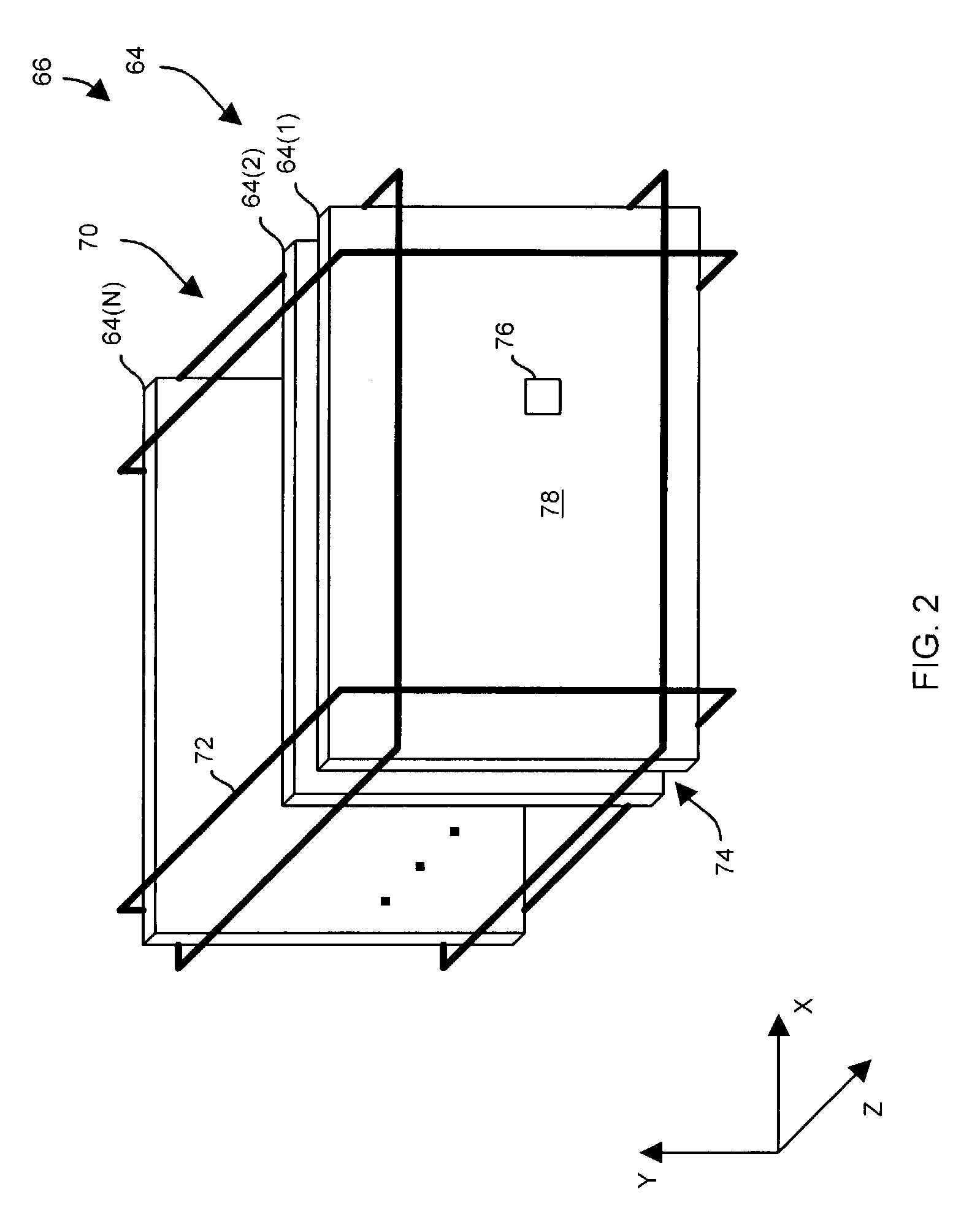Systems and methods for processing a set of circuit boards
a technology of circuit board and processing method, which is applied in the direction of stacked spaced pcbs, chemistry apparatus and processes, cleaning using liquids, etc., can solve the problems of contamination posing a threat to the circuit board, the circuitry within such components is becoming increasingly sensitive to the cleanliness of the circuit board, and the above-described conventional approach to manufacturing circuit boards. achieve the effect of reducing the amount of time and energy
- Summary
- Abstract
- Description
- Claims
- Application Information
AI Technical Summary
Benefits of technology
Problems solved by technology
Method used
Image
Examples
Embodiment Construction
[0033]The invention is directed to circuit board processing techniques which involve cleaning circuit boards by providing a first flow of cleaning fluid (e.g., aqueous solvent) in a first direction relative to the circuit boards and subsequently a second flow of the cleaning fluid in a second direction relative to the circuit boards, while the circuit boards are immersed in a wash tank containing the cleaning fluid. The multiple flows of cleaning fluid at different times reduce or even eliminate the likelihood of forming neutral points within the tank of cleaning fluid. In particular, if the flow in the first direction results in a neutral point at a particular circuit board location, the chance is extremely remote that the flow in the second direction (e.g., a direction opposite the first direction) will form a similar neutral point at the same location. Rather, the turbulence caused by the different flows, as well as the changing of the flows in different directions, results in mo...
PUM
 Login to View More
Login to View More Abstract
Description
Claims
Application Information
 Login to View More
Login to View More - R&D
- Intellectual Property
- Life Sciences
- Materials
- Tech Scout
- Unparalleled Data Quality
- Higher Quality Content
- 60% Fewer Hallucinations
Browse by: Latest US Patents, China's latest patents, Technical Efficacy Thesaurus, Application Domain, Technology Topic, Popular Technical Reports.
© 2025 PatSnap. All rights reserved.Legal|Privacy policy|Modern Slavery Act Transparency Statement|Sitemap|About US| Contact US: help@patsnap.com



